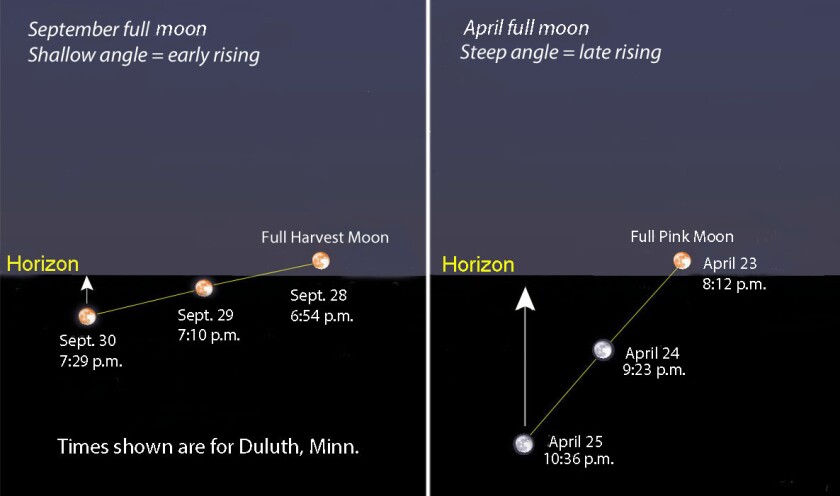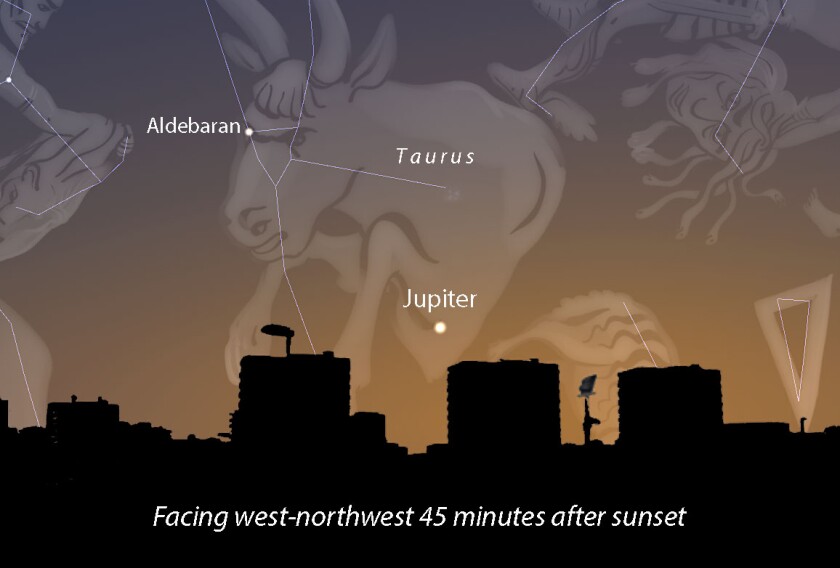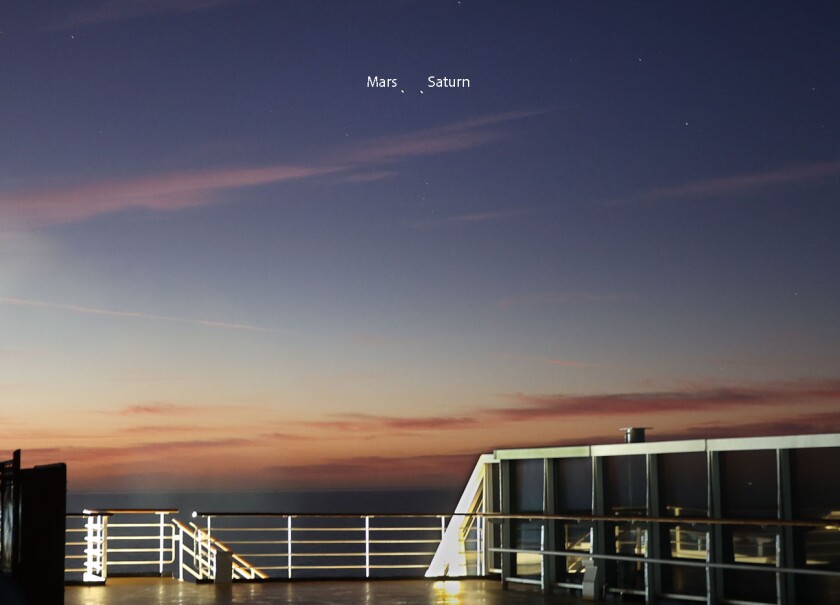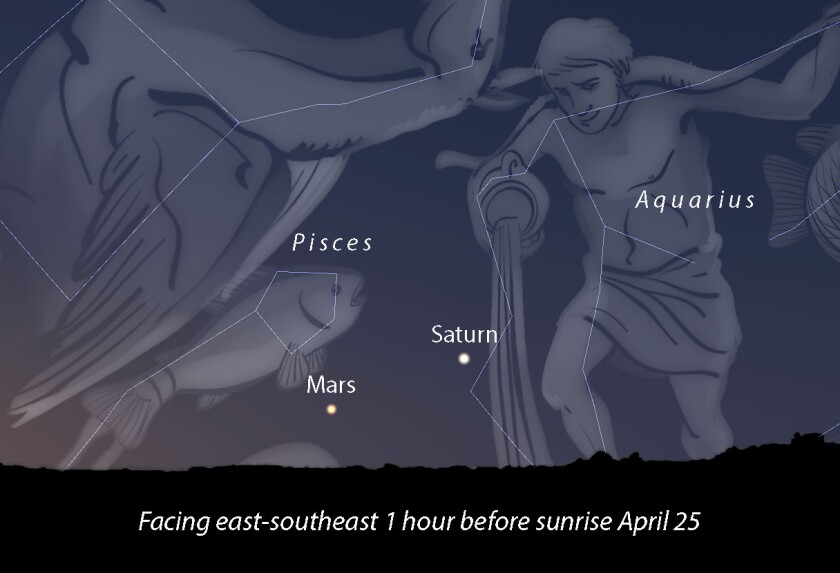On Tuesday, April 23, the Full Pink Moon made a dramatic appearance after sunset in the eastern sky. When my community education astronomy class broke up at 8:30 p.m., we filed out of the door to face a big, rising, cheddar-orange moon. A few were started to see it delivered right to our doorstep — a fitting conclusion to the night's lesson about (no surprise) the moon.

The moon orbits the Earth every 27.3 days, traveling at around 2,200 miles per hour (3,600 km/hour). We see that orbital motion play out in its 12-degree nightly slide to the east. That's equal to a little more than one balled fist held at arm's length. You have to pay attention to detect this movement because Earth's rotation still has the upper hand — it ferries the moon from east to west during the night. But the moon counters that motion somewhat, moving one lunar-diameter (1/2 degree) in the opposite direction every hour, or 12 degrees every 24 hours.

In spring, the full moon's path intersects the eastern horizon at a steep angle so that 12 degrees of eastward movement deeply buries the moon below the horizon night to night, delaying its rising time by more than an hour. For example, Tuesday night it rose at 8:12 p.m. here in Duluth, Minnesota (just 4 minutes after sunset). One night later, its rise time was 9:23 p.m. This trend is exactly the opposite of what we experience around the Harvest Moon in September and October. Then the full moon's path at the horizon is shallow, with successive moonrises delayed by a half-hour or less.
There should be a name for this late-rising, vernal full moon, just as there is for the Harvest Moon. Since flowers bloom in spring, I think Blooming Moon has a nice ring to it. If, for whatever reason, you missed Tuesday night's moonrise, try again Wednesday. The sky will be much darker, making the moon's first appearance even more dramatic. Seek a location with an unobstructed view to the east-southeast and check out timeanddate.com/moon to find the exact time to watch.
What happened to the planets?
After the moon we love finding and keeping track of our sister worlds, the planets. They're also on the move, though because of their much greater distances, they crawl more slowly across the sky. A planet's visibility is affected by the sun's location. Moon, sun and planets follow similar paths through the zodiac constellations, so if the sun happens to be in the same line of sight as a planet, say Mars, that planet will appear in the daytime sky and be impossible to see in the solar glare. On the other hand, when a planet and the sun lie on opposite sides of the sky (180 degrees apart), the planet will rise at sunset and remain visible the entire night. There are lots of in-between arrangements, too. When a planet sits 90 degrees from the sun, it stands due south at sunset and sets around midnight.
ADVERTISEMENT

Of the bright planets, only Jupiter remains tentatively visible for about another week in the evening sky. Blame the sun for abbreviating its visibility. As Earth orbits the home star, the sun appears to move eastward across the sky, completing a full circle of the zodiac in a year. Jupiter and the other outer planets also move to the east in their orbits but much more slowly because they're farther away. Inexorably, the faster sun gains on Jupiter until the gas giant temporarily disappears in its glare. To see it one last time before it transitions to the morning sky, face west about 40 minutes after sunset and use binoculars to make the task easier.

Once Jupiter disappears from view, the evening sky will be planetless for the next few months. The morning sky fares better, with Mars and Saturn visible very low in the southeastern sky at dawn. Both are nearly identical in brightness (magnitude 1.1) but vary in color. Saturn gleams the palest of yellows, while Mars is decidedly blood-orange. Depending on sky conditions, it doesn't hurt to bring binoculars to help you find them. If you're planet-hungry these two are waiting for you.

The eastward-moving sun will continue to part from Mars and Saturn, eventually leaving them in darker sky where they'll be much easier to spot. Planets in the dawn sky are always parting from the sun, while those in the evening hurry to meet it in the fading embers of twilight.











